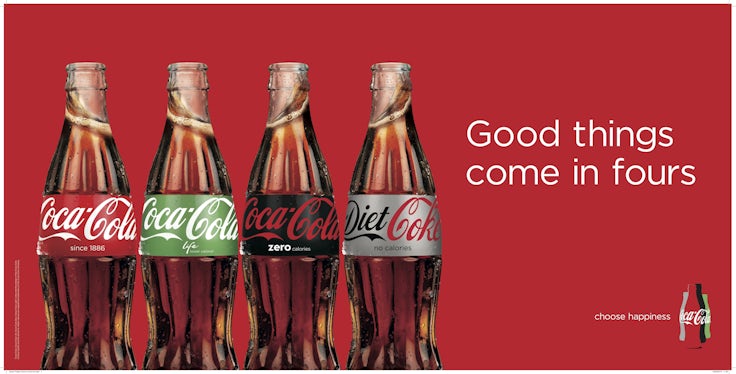The principle of hedonic adaptation lets brands reuse core messages in novel ways
One of the biggest problems businesses encounter is finding new, effective means of communicating their message in a relevant, exciting and engaging way over an extended period of time.

While this has always been true, psychological research suggests that whatever logistical issues you may face, the most fundamental battles to be fought lay inevitably in the realm of cognitive biases, hidden heuristics and human psychology.
When it comes to crafting effective content strategies, perhaps the most tricky and pertinent principles to consider is hedonic adaptation, which refers to the phenomenon of becoming less sensitive to the same stimulus over time (whether good or bad). We have all experienced this: from a coveted pay rise or promotion to a new lover, the sense of increased happiness we initially experience at the start eventually begins to fade as we become accustomed to the new situation.
Whatever our aspirations, it seems that no matter who we are, when we finally do achieve our goals, our psyches move the goal posts again, and again, in an endless rugged pursuit of the next big thing, never finding complete satisfaction in the accomplishment at hand. While this appears to be true of desirable outcomes (such as winning the lottery[1] or getting married[2]), it is curious that it also seems to hold true of negative situations, such as getting divorced[3] or being fired[4].
In practical terms, if the theory is correct, it means that whatever losses or gains may befall us, we have evolved to return to this homeostatic state of emotional equilibrium. Early research on lottery winners supports this idea. One study found evidence for both positive and negative situations: in one instance, lottery winners were not happier than non-winners; and in another, people with paraplegia were not substantially less happy than those who can walk.
Now, although this theory is rather more complex than first meets the eye (with more recent research suggesting that rather than kicking back into a neutral emotional state, most people are in fact happy most of the time[5]), it’s still an important principle to understand if you want to make the most of your marketing strategy.
From a psychological perspective, our ability to automatically habituate to our environment benefits us not least because, in the face of limited psychological resources, it allows constant stimuli to fade into the background. This frees up our remaining resources to deal with novel stimuli, which are most likely to require immediate attention[6]. In a marketing context, this can include such things as new deals, products and campaigns.
From this perspective, hedonic adaptation is one of the underlying reasons that brands have to put out new, different versions of their same core message to maintain engagement with their customers over time. A great example is the advertising campaign that American insurer Allstate launched in 2010. The main character, Mr Mayhem[7], acts out a range of disasters that could befall his intended audience. From raccoons nesting in attics to an emotionally compromised teenage girl driving a dangerous pink truck, each episode is astutely designed to provide a new, unexpected and novel way of communicating the basic message, “So get Allstate. You could save money and be better protected from Mayhem like me.”
In product terms, hedonic adaptation is the reason why Angry Birds, after initial success with the launch of its first game, had to diversify and start releasing different subsequent versions in order to continue capturing the attention and custom of its players. From “Seasons” to “Space” (and then to their stuffed toys and physical merchandise), Angry Birds’ success rested on the fact that we typically get excited by novelty, which, if triggered through new experiences, can keep provoking positive responses and sales over an extended period of time.
So what does this mean for you? Well, if you want to design a holistic, long-term content strategy that builds momentum and maximises continued engagement, not only do you need to research and plot the hedonic adaptation curve of your customers, but also anticipate and correct for it through the clever use of carefully timed, novel content.
Footnotes
[1] Brickman, P., Coates, D., & Janoff-Bulman, R. (1978). Lottery winners and accident victims: Is happiness relative?. Journal of personality and social psychology, 36(8), 917.
[2] Kahneman, D., & Krueger, A. B. (2006). Developments in the measurement of subjective well-being. The journal of economic perspectives, 20(1), 3-24.
[3] Lucas, R. E. (2005). Time does not heal all wounds a longitudinal study of reaction and adaptation to divorce. Psychological science, 16(12), 945-950.
[4] Di Tella, R., Haisken-De New, J., & MacCulloch, R. (2010). Happiness adaptation to income and to status in an individual panel. Journal of Economic Behavior & Organization, 76(3), 834-852.
[5] Diener, E., & Diener, C. (1996). Most people are happy. Psychological science,7(3), 181-185.
[6] Fredrick, S., & Loewenstein, G. (1999). Hedonic adaptation. In D. Kahneman, E. Diener, & N. Schwarz (Eds.), Well-being: The foundations of a hedonic psychology (pp. 302–329). New York: Russell Sage Foundation.
[7] Mayhem Is Everywhere (2010). Allstate Insurance. Available from: https://www.allstate.com/mayhem-is-everywhere.aspx (retrieved 19th March 2015)





